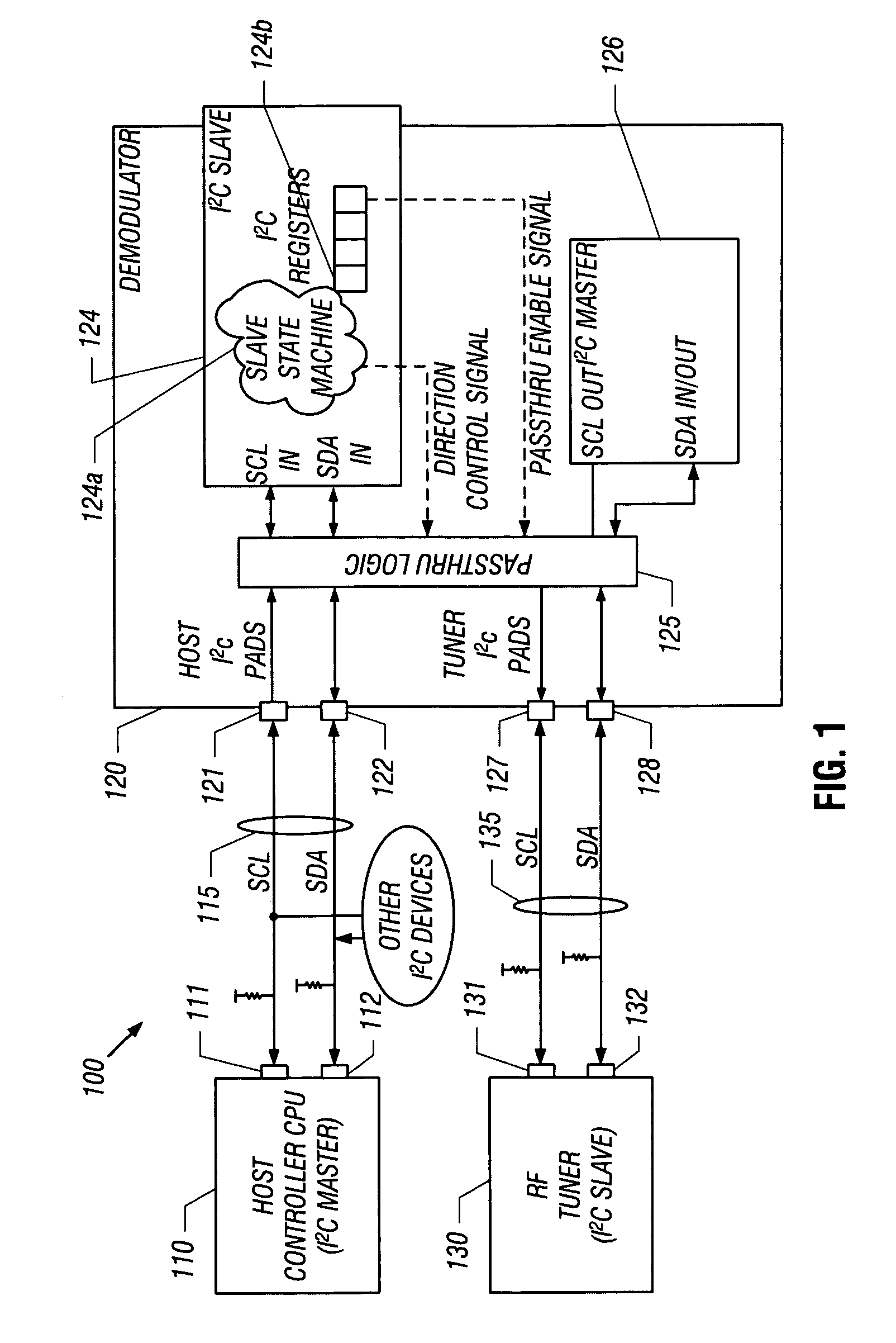Controlling passthrough of communications between multiple buses
a technology of communication and passthrough, applied in the direction of data conversion, instruments, television systems, etc., can solve the problem that two buses may remain electrically decoupled
- Summary
- Abstract
- Description
- Claims
- Application Information
AI Technical Summary
Benefits of technology
Problems solved by technology
Method used
Image
Examples
Embodiment Construction
[0015]In various embodiments, to reduce any noise inherent on a system bus due to the amount of signaling present on the bus, embodiments may provide one or more secondary buses for communication with one or more sensitive components of a system. While the scope of the present invention is not limited in this regard, embodiments may be applicable to an I2C bus, although other communication protocols can also use the techniques described herein.
[0016]In various implementations, an intermediate component, such as a slave device to a master device coupled to the primary system bus can act as an intermediary between the host device on the primary bus and one or more other slave devices that may be sensitive to noise, and that are coupled to the slave device via one or more secondary buses. In this way, the slave device can act as a controller to enable passthrough communications between the host device and the one or more secondary devices. More specifically, to enable such communicatio...
PUM
 Login to View More
Login to View More Abstract
Description
Claims
Application Information
 Login to View More
Login to View More - R&D
- Intellectual Property
- Life Sciences
- Materials
- Tech Scout
- Unparalleled Data Quality
- Higher Quality Content
- 60% Fewer Hallucinations
Browse by: Latest US Patents, China's latest patents, Technical Efficacy Thesaurus, Application Domain, Technology Topic, Popular Technical Reports.
© 2025 PatSnap. All rights reserved.Legal|Privacy policy|Modern Slavery Act Transparency Statement|Sitemap|About US| Contact US: help@patsnap.com



